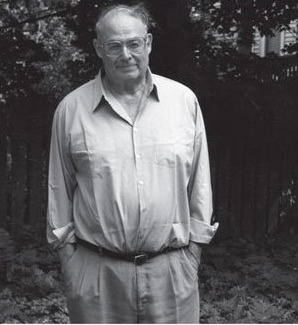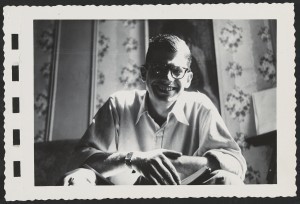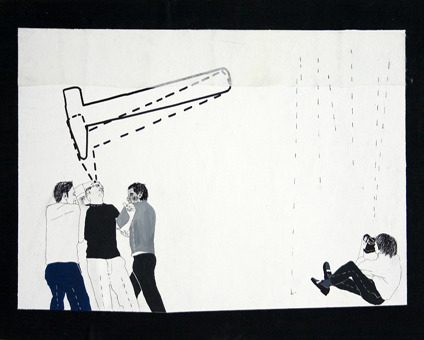The Paris Review's Blog, page 852
January 28, 2013
When You Need Ten Feet of Books…
I once knew a man who bought antique books by the foot to fill the majestic library of a new house. He was completely unembarrassed by this fact, which is, I guess, the only way to be, and there was something very eighteenth century about the whole thing. (On close inspection, a lot of them proved to be bound sermons, in many volumes.) The idea of insufficient books to fill shelves is a novel idea to most apartment dwellers, certainly in New York. I was, therefore, fascinated to read about the Strand Bookstore’s Books by the Foot program, in which the New York institution furnishes volumes for films, magazine shoots, private buyers, and, presumably, decorators. Read More »
The Hollywood Subway: Against the Horizontal City
Last train 2, Toluca Yard, 1955, courtesy of the Metro Transportation Library and Archive.
The entrance to Los Angeles’s original subway system lies hidden on a brushy slope next to an apartment building that resembles a Holiday Inn. Known as the “Hollywood Subway,” the line opened in 1925; ran 4,325 feet underground, between downtown and the Westlake District; and closed in 1955. After Pacific Electric Railway decommissioned the tracks, homeless people started sleeping in the old Belmont Tunnel. Crews filmed movies such as While the City Sleeps and MacArthur in it. City officials briefly used it to store impounded vehicles, as well as first aid and 329,700 pounds of crackers during part of the Cold War. By the time the entrance was sealed around 2006, graffiti artists had been using it as a canvas for decades, endowing it with legendary status in street mural culture, and earning it numerous appearances in skateboard and other magazine shoots. Now the tunnel sits at the end of a dead-end street, incorporated into the apartment’s small garden area, resembling nothing more than another spigot in Los Angeles’s vast flood control system. Read More »
Down the Rabbit Hole
However complicated Lewis Carroll’s legacy (he turned 151 yesterday), nobody can dispute its role in popular culture. Alice’s Adventures in Wonderland has spawned more than twenty adaptations, not counting those works inspired by the 1865 classic. The following, from 1903, is the first: it stars one May Clark, and features some fairly nifty special effects.
Richard G. Stern, 1928–2013
We mourn the loss of Richard Stern, a lion of the literary world whose name was little known outside the den. He established himself as a nurturing teacher and a powerful force in literature at the University of Chicago, where, while writing, he taught English and creative writing from 1955 until his retirement in 2001. In Stern’s New York Times obituary, Philip Roth recalls meeting Saul Bellow, Robert Lowell, John Berryman, and Norman Mailer in Stern’s U of C classroom. During his tenure at the school, Stern was awarded the Medal of Merit for the Novel by the American Academy of Arts and Letters, in 1986.
He published fiction, short stories, and essays prolifically, appearing in The Paris Review four times, across a span of almost thirty years. The second of these occurrences, from Issue 66 (Summer 1976), was the story “Aurelia Frequenzia Reveals the Heart and Mind of the Man of Destiny,” a brief and disorienting vignette about the interview of a mysterious Vietnamese ex-politician by a French journalist. Marked by a strong current of anxiety and paranoia, tension builds and builds until an abrupt and surprising resolution. It is representative of the work he shared with us.
Digital Diary, and Other News
A digital edition of Anne Frank’s diary is rich with family photos from Otto Frank’s prewar collection.
“The prisoners have as much of a selection as we can pack onto the rolling cart.” The library the NYPL operates at Rikers Island.
Here is a pleasantly challenging Pride and Prejudice quiz.
Also celebrating a landmark birthday: Grand Central Station. Its fictional legacy.
“E-books are to actual books as pictures of cats are to actual cats curled & purring in your lap as you read,” tweets Joyce Carol Oates.
January 25, 2013
The Gift of Hunger
 The first time I cooked for him, it was the height of August. The meal was very simple: a salad; a pasta; some peaches I roasted and served with ice cream. Nothing special. And he seemed to like it okay. But the writing was on the wall: this was a man who ate to live, and not the other way round.
The first time I cooked for him, it was the height of August. The meal was very simple: a salad; a pasta; some peaches I roasted and served with ice cream. Nothing special. And he seemed to like it okay. But the writing was on the wall: this was a man who ate to live, and not the other way round.
For some of us, this is unthinkable. I am always plotting my next meal, mulling over my last, calculating my degree of appetite. Those days when illness robs me of hunger are among my most hopeless. I remember food scenes in movies and books better than others. The city is mentally mapped by cookies and hamburgers; noodle stands are my landmarks; a trip is an opportunity to eat new things, and work up an appetite, and try more. Read More »
On This Day
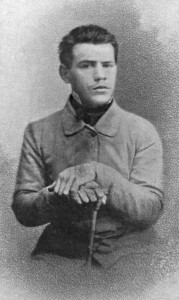 “I’ve fallen in love or imagine I have; went to a party and lost my head. Bought a horse which I don’t need at all.” —Leo Tolstoy, January 25, 1851
“I’ve fallen in love or imagine I have; went to a party and lost my head. Bought a horse which I don’t need at all.” —Leo Tolstoy, January 25, 1851
What We’re Loving: Ham Biscuits, Victoriana
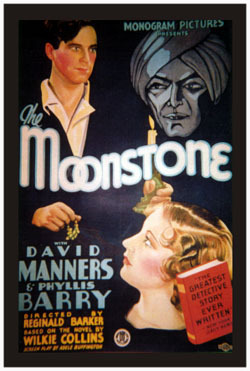 Over the weekend, I had one of those magical visits to the Strand where you find exactly the book you’re looking for: in this case, Julia Reed’s Ham Biscuits, Hostess Gowns, and Other Southern Specialties, a collection of Reed’s food essays for the New York Times Magazine. I read it in a single sitting and came out feeling like the author was an old friend, and with a serious hankering for deviled eggs. Reed’s life sounds glamorous and fun and filled with friends, and she writes about the South’s idiosyncrasies with warmth and authority. Only, don’t try to get it at the Strand: I nabbed the only copy. —Sadie O. Stein
Over the weekend, I had one of those magical visits to the Strand where you find exactly the book you’re looking for: in this case, Julia Reed’s Ham Biscuits, Hostess Gowns, and Other Southern Specialties, a collection of Reed’s food essays for the New York Times Magazine. I read it in a single sitting and came out feeling like the author was an old friend, and with a serious hankering for deviled eggs. Reed’s life sounds glamorous and fun and filled with friends, and she writes about the South’s idiosyncrasies with warmth and authority. Only, don’t try to get it at the Strand: I nabbed the only copy. —Sadie O. Stein
How does The New York Review of Books even exist? Historians will marvel that something so good could last so long. Although we may never wrest an interview from our hero Robert Silvers—who founded the Review fifty years ago with the late Barbara Epstein—others are ready to talk. Radio host Janet Coleman kicks off a series of New York Review reminiscences at their blog. —Lorin Stein
Downton Abbey has lately inspired me to read serial novels of Victorian England, allowing me to experience the same kind of long-term relationship with characters and the same range of social strata. Recently, I’ve been enjoying The Moonstone, by Wilkie Collins, of which T. S. Eliot said, “Everything that is good in the modern story can be found in The Moonstone.” A Victorian mystery with a dash of Indiana Jones, far from esoteric and very accessible. —Andrew Plimpton
Romanian concert pianist Radu Lupu performed at Carnegie Hall last night. It was a lovely program, by all accounts, but the second half of the evening was truly phenomenal. Sitting in a high-backed chair and moving his body infrequently, and then only slightly, Lupu played Book II of Debussy’s Préludes with tender forcefulness. The tension between his stoic person and romantic musicality was performance enough; in some ways, the music itself seemed irrelevant, though it’s been running through my head since. There’s no recording of Lupu playing it, that I can find, but this series on YouTube features a rendition by Sviatoslav Richter. —Clare Fentress
Mad Men fans were buoyed this week by the news that season six is set to premiere April 7. I doubt that I need to convince anyone of Matthew Weiner’s brilliance at this point—but what other show would use “Meditations in an Emergency” to illustrate a character arc? References to Frank O’Hara bookend season two, even taking “Meditations in an Emergency” as the finale episode’s title. If this intrigues you, check out this blog run by Steve Brauer, a professor at St. John Fisher College in Rochester, New York. Especially good is this bit of criticism: “What Frank O’Hara Tells Us About Don Draper.” —Laura Creste
In Love, by Alfred Hayes, is a slim novel from 1953 that deserves to be better known. The cover of the new edition features an Elizabeth Bowen quote in which she terms the book “a little masterpiece,” and I’ve rarely seen the breakdown of a relationship, in all its banality and pettiness, evoked more vividly. It’s tough, fresh, very lovely, and will stay with you. —S.O.S.
Allen Ginsberg Snaps, and Other News
Should you fancy some of the two-foot letters from the recently disassembled Borders flagship sign, you can bid for them on eBay, with all profits going to the Book Industry Charitable Foundation. And as someone who owns an S from an old marquee, I will judge you not at all.
An exhibition of beat-era Allen Ginsberg photographs is on display at Grey Art Gallery. The captions, which read like speedy mini-poems, are the best part.
The Following, a new Fox drama that features—along with Kevin Bacon and many other things—a Poe-obsessed serial killer, is probably no threat to the author’s legacy. However, it’s fun to read the tally of the show’s crimes against literature.
“I haven’t read my rivals because I think it could be a deeply demoralising process,” quoth Hilary Mantel.
Oh, and Judge Dredd might be gay.
January 24, 2013
Offsides, Part 2
Jelena Tomašević, Joy of Life, mixed media, 22.3
This is the second installment of a multiple-part post. Read part 1 here.
Like Savićević, the Croatian Zlatko Kranjčar, fifty-six, had been a successful, offensive-minded player in his day, and one who understood the importance of international soccer. Nearing the end of his career in 1990 at the age of thirty-four, Kranjčar captained Croatia’s first national game of its post-Yugoslavia era. As a coach he led the Croatian national team into the 2006 World Cup. He had experience, and a lot of it. When Savićević hired him in 2010 as Montenegro’s new manager, it was Kranjcar’s eighteenth year of coaching and his twentieth job.
Also like Savićević, Kranjčar had historically favored an attacking style of play, one that resembled the Yugoslavian teams of Montenegro’s past. “The former Yugoslav players have the reputation as the Brazilians of Europe,” said soccer journalist and Financial Times columnist Simon Kuper. At first glance, the Montenegro team appeared to be no different. Its two star players were strikers: Vučinić, the team captain, and Stevan Jovetić, who also plays in Italy, for Fiorentina. Read More »
The Paris Review's Blog
- The Paris Review's profile
- 305 followers




